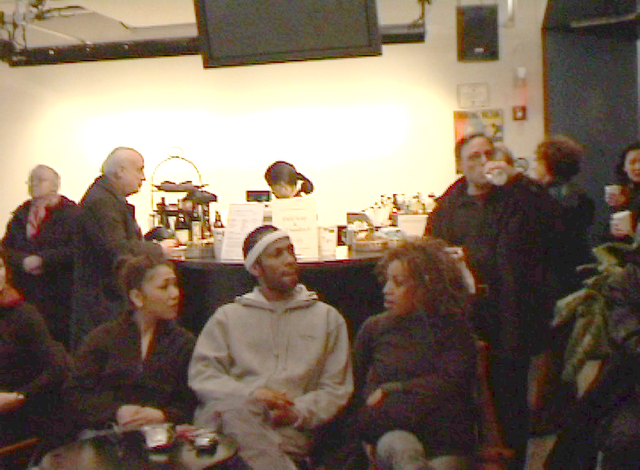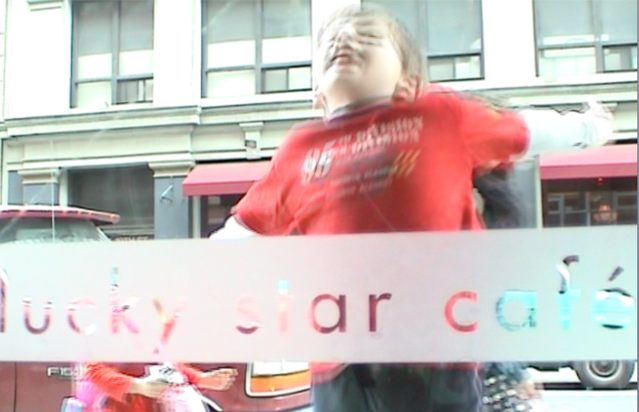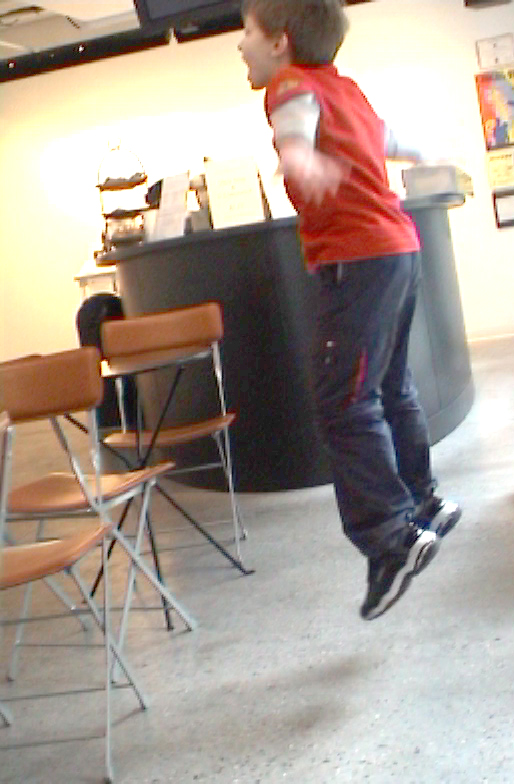Method
The work presented here is neither for a proscenium nor for a static viewer. While a public space, the sites I work in are not monumental, central, or dramatic political arenas.[1] The “performance situations” I have chosen are passage zones- tunnels, walkways, lobby areas – that interlink different locations. These locations lack dominant architectural features, are not “destinations” unto themselves and are often organized to accelerate the flow of human movement rather than to arrest it.
I will describe one example of a collaborative study I completed with Jonathan Bachrach, Goran Bogdanovski and Dejan Srhoj in 2004. It was supported by Dance Theater Workshop (DTW) where it was installed and performed during my digital ARM fellowship. The work, its description and analysis are intended to illustrate one kind of artistic research. This work is one of a series of public interactive installations I have created, in which moving one’s own body generates an experience of place that is acutely personal and time-based, and the movement heightens awareness of the flux and temporal connection to our surroundings.
My most recent piece in this line of inquiry explores the relationships between motion and depth perception (2011). It was both a performance “A Dance in Sol LeWitt’s ‘Bars of Color Within Squares (MIT)’”:
http://arts.mit.edu/fast/nell-breyer-sol-lewitt/
and a video installation “Perspectives on a Dance in Sol LeWitt’s ‘Bars of Color Within Squares (MIT)’”:
http://www.carrollandsons.net/exhibitions/past.php
Press and commentary can be found here:
http://timeoutboston.com/arts-culture/114103/cyberarts-festival-bars-of-colors-within-squares
[1] Such as sites selected by early pioneers in the field of interactive public video such as Rafael Lozano Hemmer or Krzysztof Wodiczko. These artists select locations for their works in areas that lend themselves to being heightened political arenas – architectural frameworks that often help dramatize or give voice to marginalized groups, outsiders and/or encourage dialogue around social constructs of “us” versus “them”.


